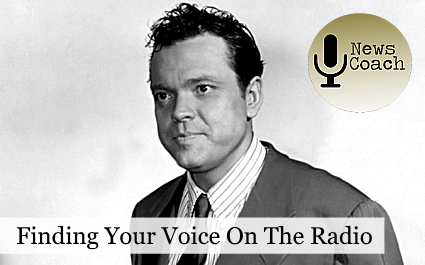It’s Hypnotic. It’s Invisible. It’s Radio!
By Joanne Stevens

Whether it was Orson Welles’ rendition of The Shadow, eight years of CBS Radio's Mystery Theater, or today’s Selected Shorts on NPR, we’ve been enraptured by the spoken word on radio for a long, long time. For a heart thumping rush, try listening to The Monkey’s Paw by W.W. Jacobs. I almost drove off the road.
On Broadway in New York, playwrights Spaulding Gray and Wendy Wasserstein present their one-person plays just sitting or standing. With natural changes in cadence and pacing, with subtle changes in pitch and flirtations with onomatopoeia, their voices swirl within the theater and into our minds.
Add some nat sound and SOTs to any of the above, and we’re getting pretty close to the magic of radio reporting. It sidesteps video and still powerfully brings us the news and information we want. It finds us whether we’re farming on a tractor, walking, driving, or anticipating financial news at our desk.
Want to fall in love or celebrate an anniversary with this invisible,
formidable medium? Leave the makeup at home and prepare to be intimate.
Here’s what you’ll need in your kit:
And then? To be continued. In the coming weeks, we’ll talk more about building a great radio news
story, discuss some common mistakes in tracking and radio anchoring and I'll
do another shoutout (modeled after my newspaper one), but this time about
financial reporting on the radio. Looks like we're about to have a a whole
series about radio, and well deserved. Who knows what evil lurks in the heart of men? Orson Welles did. Listen to
how he conveys the story and think about how those techniques can work for
us. Joanne Stevens News consultant Joanne Stevens has written extensively about broadcast
writing, reporting and anchoring, including columns in the former print version
of RTDNA's Communicator Magazine, and earlier versions of the RTDNA website. She
has taught at Columbia and New York University and serves as a news award judge
for the New York Press Club. She has returned to RTDNA.org to offer a new series
of News Coach columns with tips, best practices and more. - Click on
the RTDNA logo below to learn more.


